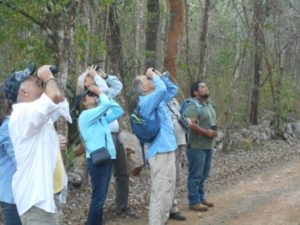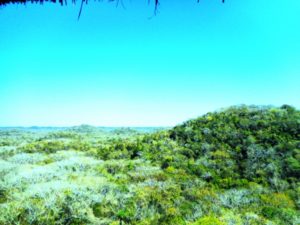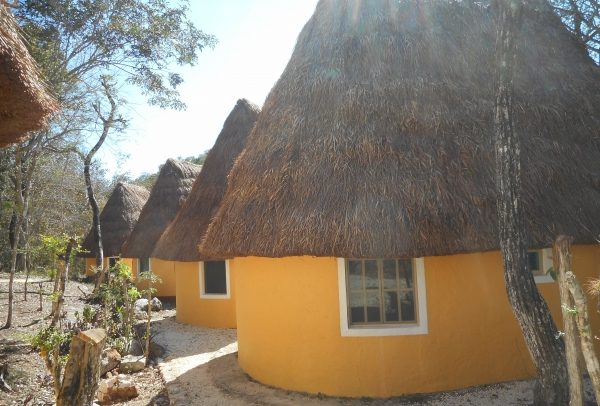Text and photos by Robert Adams
XUL, Yucatan — In Maya, Kaxil Kiuic means “gathering place in the forest.”
And this is exactly what the Kaxil Kiuic Bio-Cultural Reserve in southern Yucatan is striving to be: a place where groups of students, teachers, wildlife and plantlife enthusiasts and visitors interested in Mayan culture and history can come together to learn, share and grow as individuals.
The 4,500-acre reserve, founded in 1999 by Merida resident James Callaghan in cooperation with Millsaps College in Mississippi and other benefactors, is aiming to attract more low-impact group tourism to the fascinating Puuc Hills region in Yucatan’s southern cone.
Kaxil Kiuic – located about 60 miles south of Merida — is already well-known among U.S. colleges and universities for its programs for visiting students. The center’s tidy dormitory and well-maintained Mayan-style cabins are well-suited to young students who come to immerse themselves in learning about Mayan archaeology as well as environmental issues related to the surrounding dry tropical forest.
But now, like the 200-odd species of exotic birds that populate this patch of forest, Kaxil Kiuic is stretching its wings to reach a wider range of visitors.

This goal entails broadening the base of financial suppport for Kaxil Kiuic’s various projects, says Callaghan, the reserve’s director.
“We’re going to be the host for the annual Festival de Aves “Toh” (the Toh Birding Festival) in November, Callaghan said. The well-established festival, run by the Pro-Natura environmental group, should bring several hundred visitors to Kaxil Kiuic for a long weekend of birding.
Learning about the reserve’s ground-breaking program using trap-cameras to monitor wildlife – including large cats such as jaguars, pumas, ocelots and jagarundis — is another reason visitors find their way to Kaxil Kiuic. Overseen by biologist Ricardo Pasos and others, the trap cameras have captured photos of these cats and other wildlife like deer, turkeys, porcupines and smaller animals.
Managed by Callaghan’s wife Rubí, a Merida native, Kaxil Kiuic’s small dining area serves tasty meals centered on local Mayan dishes. With the help of two local women, Rubí cheerfully provides hearty sustenance for visitors needing nourishment to sustain them during long days on the trails and ruins of Kaxil Kiuic.

The reserve contains an extensive Mayan archaeological site with several impressive structures, which visitors staying at Kaxil Kiuic can explore. However, like the reserve itself, the site is not now open to drop-in visitors.
Another impressive feature of the reserve is a towering observation platform for viewing the forest and monitoring its air quality using sophisticated carbon-capture equipment.
The reserve’s expansive tree and plant nursery is another feature which could hold even more importance in the near future as Kaxil Kiuic seeks to evolve from its non-profit status into a comercial operation. Selling seedling ramón, Guanacaste — even ceiba and other hardwoods and palms — could provide needed income.
On a recent visit to the reserve, a daybreak birding trek offered glimpses of forest hawks, pygmy owls, tohs, woodpeckers, orioles, hummingbirds and many others of the 200-plus species of birds that inhabit the forest.
This fact implies an answer to the question Callaghan says Kaxil Kiuic seeks each day to answer: Why do we need forests?
####






